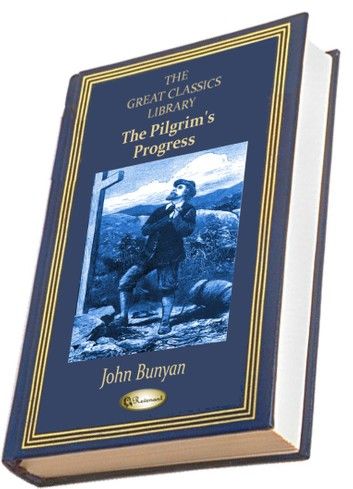This book - originally "The Pilgrim's Progress from This World to That Which Is to Come" is a Christian allegory, published in February, 1678 and is regarded as one of the most significant works of religious English literature. It has been translated into more than 200 languages, and has never been out of print.
Bunyan began his work while in the Bedfordshire county gaol for violations of the Conventicle Act, prohibiting the holding of religious services outside the auspices of the established Church of England. Though early Bunyan scholars like John Brown believed The Pilgrim's Progress was begun in Bunyan's second shorter imprisonment for six months in 1675, more recent scholars like Roger Sharrock believe that it was begun during Bunyan's initial, more lengthy imprisonment from 1660–72 right after he had written his spiritual autobiography, Grace Abounding to the Chief of Sinners.
The English text comprises 108,260 words and is divided into two parts, each reading as a continuous narrative with no chapter divisions. The first part was completed in 1677 and entered into the stationers' register on 22 December 1677. It was licensed and entered in the "Term Catalogue" on 18 February 1678, which is looked upon as the date of first publication. After the first edition of the first part in 1678, an expanded edition, with additions written after Bunyan was freed, appeared in 1679. The Second Part appeared in 1684. Eleven editions of the first part appeared in John Bunyan's lifetime, published in successive years from 1678 to 1685 and in 1688, and two editions of the second part, published in 1684 and 1686.
John Bunyan (28 1628 – 1688) was an English Christian writer and preacher. Though he became a non-conformist and member of an Independent church, and has been described both as a Baptist and as a Congregationalist, he himself preferred to be described simply as a Christian. He is remembered in the Church of England with a Lesser Festival on August 30, and on the liturgical calendar of the Episcopal Church (US) on August 29. Some other Churches of the Anglican Communion, such as the Anglican Church of Australia, honor him on the day of his death (August 31) together with St Aidan of Lindisfarne.











